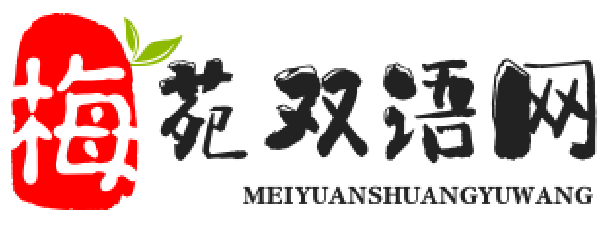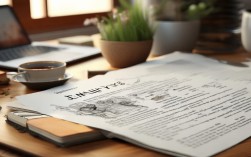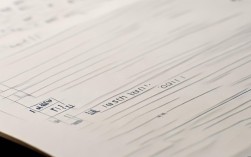客观、准确、清晰地描述图表中的信息,并进行必要的比较、总结和归纳,而不需要发表个人观点。

下面我将为你提供一个全面的“Table小作文”写作指南,包括结构、步骤、常用词汇和范文。
Table小作文的核心结构
一篇优秀的图表作文通常遵循“总-分-总”的结构,分为三个段落:
第一段:引言 - 概述图表
- 目的:简要介绍图表内容,让读者对图表有一个总体印象。
- 改写题目:用不同的词汇和句式重新描述题目要求。
- 说明图表类型和时间/范围:指出这是一个表格,并标明其反映的时间段或数据范围。
- 概括主要趋势或最显著特征:用一两句话点出图表中最核心、最引人注目的信息。
- 注意:不要在此段列出所有数据,只做宏观概括。
第二段:主体 - 详细描述与比较
- 目的:详细、有条理地分析图表中的具体数据。
- 分组/分类描述:不要按照题目顺序逐条罗列数据,而是将数据进行逻辑分组,进行比较。
- 按类别比较(比较A、B、C三个国家的数据)。
- 按时间顺序描述(描述某个国家从2010年到2025年的变化)。
- 描述最高/最低值。
- 描述相似点和不同点。
- 引用数据:在描述时,必须引用图表中的具体数据来支持你的观点,使用
at,in,with,accounting for,constituting等介词和动词。 - 使用比较级和最高级:如
higher than,lower than,the highest,the most significant increase等。 - 描述变化:如果表格涉及不同时间的数据,要使用表示变化趋势的词汇(见下文词汇表)。
- 分组/分类描述:不要按照题目顺序逐条罗列数据,而是将数据进行逻辑分组,进行比较。
- 注意:这一段通常需要2-3个自然段,以确保逻辑清晰,内容充实。
第三段:- 总结归纳
- 目的:对第二段的分析进行总结,重申主要发现。
- 概括主要趋势:再次强调图表反映出的核心趋势或最重要的对比。
- 重申关键数据:可以再次提及一两个最具代表性的数据来强化结论。
- 避免引入新信息:结论段是对全文的总结,不要提出图表中没有体现的新观点或数据。
写作步骤
-
审题:花1-2分钟仔细阅读题目,明确以下几点:
- 图表类型:是表格吗?还是混合图表?
- 描述对象:是什么数据?(如:国家、年份、产品类别)
- 时间范围:数据是哪一年的?还是跨年份的?
- 核心任务:只是描述,还是需要比较和总结?
-
观察与规划:花3-5分钟快速浏览表格,找出关键信息,并规划段落结构。
- 找出最大值和最小值。
- 找出数据的显著变化(如急剧上升、大幅下降)。
- 找出数据的相似点(如几个国家数据接近)。
- 决定如何分组:是按国家分组,还是按年份分组?
-
撰写:根据规划,用20分钟左右完成写作。
- 第一段:写引言。
- 第二段:写主体分析,分点描述。
- 第三段:写结论。
-
检查:留出2-3分钟检查。
- 语法和拼写:检查主谓一致、时态、冠词、单复数等。
- 数据准确性:核对引用的数据是否与图表一致。
- 词汇和句式:是否有重复用词?句式是否多样?
常用词汇和句式
动词/动词短语:
- 描述/表示:
show,illustrate,present,indicate,reveal,describe,summarize - 比较:
compare,contrast,be similar to,differ from,while,whereas - 变化/趋势:
- 上升:
increase,rise,grow,climb,surge,soar - 下降:
decrease,decline,drop,fall,slump,plummet - 平稳:
remain stable/constant/unchanged,level off,plateau - 波动:
fluctuate - 达到:
reach,hit,peak at,bottom out at
- 上升:
副词/形容词:
- 程度:
significant(ly),dramatical(ly),considerable(ly),slight(ly),modest(ly),minimal(ly) - 趋势:
steady,gradual,sharp,rapid,slow,slight
数据表达:
account for(占...比例)constitute(构成)make up(构成)A was three times higher/larger than B.(A是B的三倍)A accounted for 50% of the total.(A占总数的50%)The figure for A stood at 100 in 2025.(A在2025年的数据是100)
常用句式:
The table provides a breakdown of...(该表格详细说明了...)As is illustrated/demonstrated in the table,...(如图表所示,...)The table presents data regarding...(该表格呈现了关于...的数据)
- 主体:
In terms of...,...(在...方面,...)Regarding..., it is clear that...(..,很明显...)A had the highest figure..., while B had the lowest.(A的数据最高,而B最低。)There was a significant increase in... from... to...(从...到...,...有了显著的增长。)The number of... remained relatively stable over the period.(在这段时间内,...的数量保持相对稳定。)
In conclusion, the table data reveals that...(表格数据揭示了...)Overall, it is apparent that...(总体而言,很明显...)To summarize, the most striking feature is...(最显著的特点是...)
范例分析
** The table below shows the percentage of adults in different age groups who used the internet for various purposes in one European country in 2005 and 2010.
| Purpose for using the Internet | Age 16-24 | Age 25-34 | Age 35-44 | Age 45-54 | Age 55-64 | Age 65+ |
|---|---|---|---|---|---|---|
| Social Networking | 88% | 72% | 56% | 40% | 25% | 10% |
| Online Shopping | 75% | 80% | 82% | 78% | 65% | 30% |
| Banking | 45% | 55% | 60% | 58% | 40% | 15% |
范文:
Introduction (第一段) The table illustrates the proportion of adults in six distinct age groups who utilized the internet for three primary purposes—social networking, online shopping, and banking—in a European country over a five-year period from 2005 to 2010. Overall, it is evident that internet usage for all three activities was most prevalent among the younger age groups and declined steadily with age.
Body Paragraph 1 (第二段 - 描述主要趋势和最高/最低值) Social networking was the most popular online activity, particularly among the youth. In 2010, a striking 88% of individuals aged 16-24 engaged in this activity, which was significantly higher than the 10% recorded in the 65-and-over











